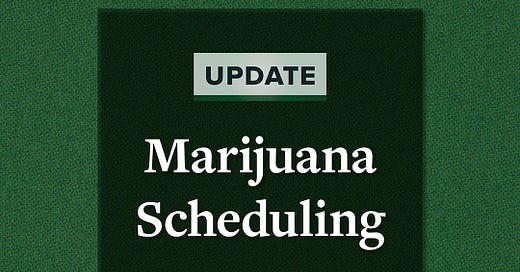Even DIRTIER Secrets On Rescheduling
From Hunter Biden's Laptop to DEA's Orange Book to Staggered Listings
In my last post on rescheduling with a tabloid headline, I took on several myths/misunderstandings about rescheduling. I also delved into the treaty issues, which are important to understand at this juncture. Check it out here:
The Dirtiest Little Secrets About Rescheduling
·
By now, everyone and their mom has heard that HHS recommended to DEA marijuana be moved to Schedule III. Early in the day, following a leak, Bloomberg reported that HHS recommended Schedule III. Shortly thereafter, the HHS Secretary confirmed that HHS had “follow[ed] the data and science” and wasn’t influenced by PR and politics by posting the following notice at
This next post continues the rip, picking up where I last left off.
In particular, the cannabis industry is putting a lot of fai…




